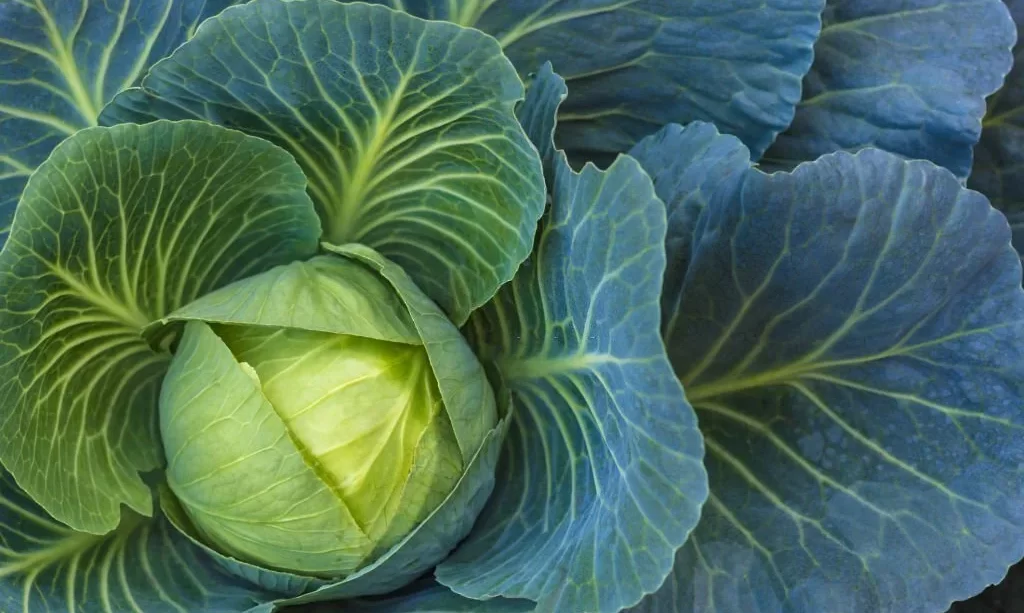Cabbage, with its dense, leafy head and versatility in the kitchen, is a staple vegetable in many households. From coleslaw to sauerkraut, cabbage has found its way into a wide range of dishes. However, while most of us are familiar with the use of cabbage as a whole head or shredded leaves, there’s a culinary question that often goes unasked: can you eat cabbage leaves? In this exploration of cabbage’s edible potential, we will uncover the surprising answer to whether cabbage leaves are not only edible but also nutritious and delicious. Let’s embark on a journey through the world of cabbage leaves and discover how they can elevate your culinary creations.
- fresh from florida
- green cabbage
- fresh produce
Edibility of Cabbage Leaves
Cabbage leaves are not merely the protective layers that encase the heart of this cruciferous vegetable; they are indeed edible and have been a part of culinary traditions in various cultures for centuries. While the dense, crisp head of cabbage is the most commonly used part, the outer leaves are equally edible and offer a unique culinary experience.
One key to unlocking the edibility of cabbage leaves is proper preparation. These outer leaves can be tougher and more fibrous than the inner leaves, so they benefit from cooking methods that make them tender and palatable. In many traditional dishes, such as stuffed cabbage rolls or cabbage wraps, the outer leaves are parboiled or blanched to soften them, making them pliable for rolling and stuffing.
Beyond these classic preparations, cabbage leaves can be used in various culinary applications. They can add a mild, cabbage-like flavor and a delightful texture to dishes like soups, stir-fries, and salads. The key is to treat cabbage leaves with care, knowing how to prepare and cook them to bring out their best qualities in your meals.
Nutritional Value of Cabbage Leaves
Cabbage leaves, like the rest of the cabbage plant, offer a wealth of nutritional benefits. They are rich in vitamins, minerals, and dietary fiber, making them a valuable addition to your diet. Here’s a closer look at the nutritional content of cabbage leaves:
- Vitamins: Cabbage leaves are a good source of vitamin K, which is essential for blood clotting and bone health. They also contain vitamin C, an antioxidant that supports the immune system and promotes healthy skin.
- Minerals: Cabbage leaves provide minerals such as potassium, which is important for maintaining healthy blood pressure, and manganese, which plays a role in bone formation and metabolism.
- Dietary Fiber: Cabbage leaves are fiber-rich, which can aid digestion and promote a feeling of fullness. Fiber is also known for its potential to support heart health and regulate blood sugar levels.
- Low in Calories: Cabbage leaves are low in calories, making them a smart choice for those looking to manage their calorie intake while still enjoying nutritious greens.
Culinary Uses of Cabbage Leaves
Cabbage leaves are a versatile ingredient in the culinary world, offering a range of creative possibilities beyond the familiar coleslaw. Here are some culinary uses for cabbage leaves:
- Stuffed Cabbage Rolls: One of the most famous dishes featuring cabbage leaves is stuffed cabbage rolls. These can be filled with a flavorful mixture of meat, rice, and seasonings, then simmered in a savory sauce until tender.
- Cabbage Wraps: Cabbage leaves make excellent wrappers for various fillings, both vegetarian and meat-based. Think of them as a nutritious alternative to tortillas or bread in wraps and burritos.
- Soups and Stews: Shredded or chopped cabbage leaves can be added to soups and stews for a delightful crunch and a mild, earthy flavor. Cabbage leaves are a common ingredient in hearty dishes like cabbage soup.
- Stir-Fries: Thinly sliced cabbage leaves can be stir-fried with other vegetables and protein sources for a quick and nutritious meal. They add texture and absorb the flavors of your chosen seasonings.
- Salads: Cabbage leaves can be incorporated into salads for their unique texture and mild flavor. They pair well with a variety of salad ingredients and dressings.
- Fermentation: Cabbage leaves are essential in the art of fermentation, particularly for making sauerkraut. Their natural crispness and ability to hold moisture are perfect for preserving vegetables.
- Cabbage Chips: Cabbage leaves can be seasoned and roasted in the oven to create crispy cabbage chips—a healthier alternative to potato chips.
Incorporating cabbage leaves into your culinary repertoire can enhance the flavor and nutritional value of your meals. Whether you opt for classic recipes or get creative with your own cabbage leaf concoctions, you’ll discover that these often-overlooked leaves have much to offer in terms of taste and nutrition.
Preparing and Cooking Cabbage Leaves
Preparing and cooking cabbage leaves is a straightforward process that can yield delicious results. Here are some steps and tips to make the most of your cabbage leaves:
- Separation: Carefully remove the outer leaves from the cabbage head. These are often larger and tougher than the inner leaves.
- Cleaning: Rinse the cabbage leaves under cold running water to remove any dirt or debris. Pat them dry with a clean kitchen towel.
- Blanching or Parboiling: To make cabbage leaves tender and pliable for dishes like stuffed cabbage rolls or wraps, blanch or parboil them. Bring a pot of salted water to a boil, then briefly immerse the leaves for 1-2 minutes until they soften. Quickly transfer them to an ice water bath to stop the cooking process.
- Trimming: After blanching, trim the thick central stem from each leaf to make them easier to roll or fold.
- Seasoning: Cabbage leaves can be seasoned with your choice of herbs, spices, and fillings to suit your recipe. They readily absorb flavors, enhancing the overall taste of your dish.
- Cooking Methods: Depending on the recipe, cabbage leaves can be baked, simmered, stir-fried, or roasted. Follow your specific recipe instructions for the best cooking method.
Storing Cabbage Leaves
Storing cabbage leaves properly can help extend their freshness and usability. Here are some tips for storing cabbage leaves:
- Refrigeration: Place cabbage leaves in a resealable plastic bag or an airtight container and store them in the refrigerator. They can remain fresh for up to a week.
- Freezing: If you have excess cabbage leaves, consider blanching and freezing them for longer-term storage. Blanched leaves can be frozen in a single layer on a baking sheet and then transferred to a freezer bag.
- Use within a Reasonable Time: While cabbage leaves can be stored, they are best when used relatively soon after purchase or harvesting to retain their flavor and texture.
Conclusion
In conclusion, the often-overlooked cabbage leaves offer a treasure trove of culinary potential. They are not only edible but also packed with essential nutrients, making them a valuable addition to your diet. With proper preparation and cooking, cabbage leaves can become stars in your kitchen, contributing to a range of dishes from stuffed cabbage rolls to crispy chips.
As you explore the world of cabbage leaves, you’ll discover their versatility and adaptability in various recipes. So, the next time you find yourself with a head of cabbage, don’t forget to explore the potential of its leaves, reducing food waste and expanding your culinary horizons.




